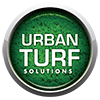Environmental Impact of Artificial Grass
The environmental impact of artificial grass is multifaceted, presenting both advantageous and challenging aspects. As we explore this topic, it’s important to balance these various elements, understanding the benefits alongside the environmental costs associated with this innovative product.
Artificial grass undoubtedly offers significant environmental advantages. One of the most considerable benefits is water conservation. Natural grass requires substantial quantities of water for maintenance, particularly in warmer climates or during the summer months. In contrast, artificial grass remains lush and green without any need for watering, representing a crucial advantage in regions prone to drought or water restrictions, such as many parts of New Zealand.

Artificial grass eliminates the need for harmful pesticides, fertilisers, and weed killers that are often necessary to maintain a natural lawn. These chemicals can contaminate local groundwater and harm beneficial insects, contributing to biodiversity loss. The reduction in chemical use is thus a significant eco-benefit of artificial grass.
Artificial grass also reduces emissions from petrol-powered lawnmowers. According to some estimates, running a lawn mower for one hour can produce the same amount of pollutants as driving a car for hundreds of miles. In this respect, switching to artificial grass can contribute to the reduction of carbon emissions.
Along with these benefits, artificial grass poses some environmental challenges. The manufacturing process, which involves the use of plastics and energy-intensive production, results in carbon emissions and potential plastic waste. Furthermore, artificial grass, like all plastic-derived products, takes a long time to decompose in landfills, posing issues of waste management.
Artificial grass surfaces can also contribute to the urban heat island effect. Unlike natural grass, which cools the surroundings through evapotranspiration, artificial grass absorbs heat and can make the immediate area warmer. Manufacturers are aware of this issue and are working on technological advancements to reduce heat absorption.
While artificial grass does have some elements of recyclability, it’s not entirely recyclable due to the mixed materials often used in its production. This challenge has been a focus for the industry, with ongoing research and development efforts working towards fully recyclable artificial turf.
While artificial grass presents undeniable environmental benefits such as water conservation and a reduction in the use of harmful chemicals and emissions, it also brings some environmental challenges related to heat absorption, recyclability, and waste production. It’s important for consumers and the industry alike to recognise these issues and seek continual improvements in product design and lifecycle management, contributing to a more sustainable future for artificial grass.
